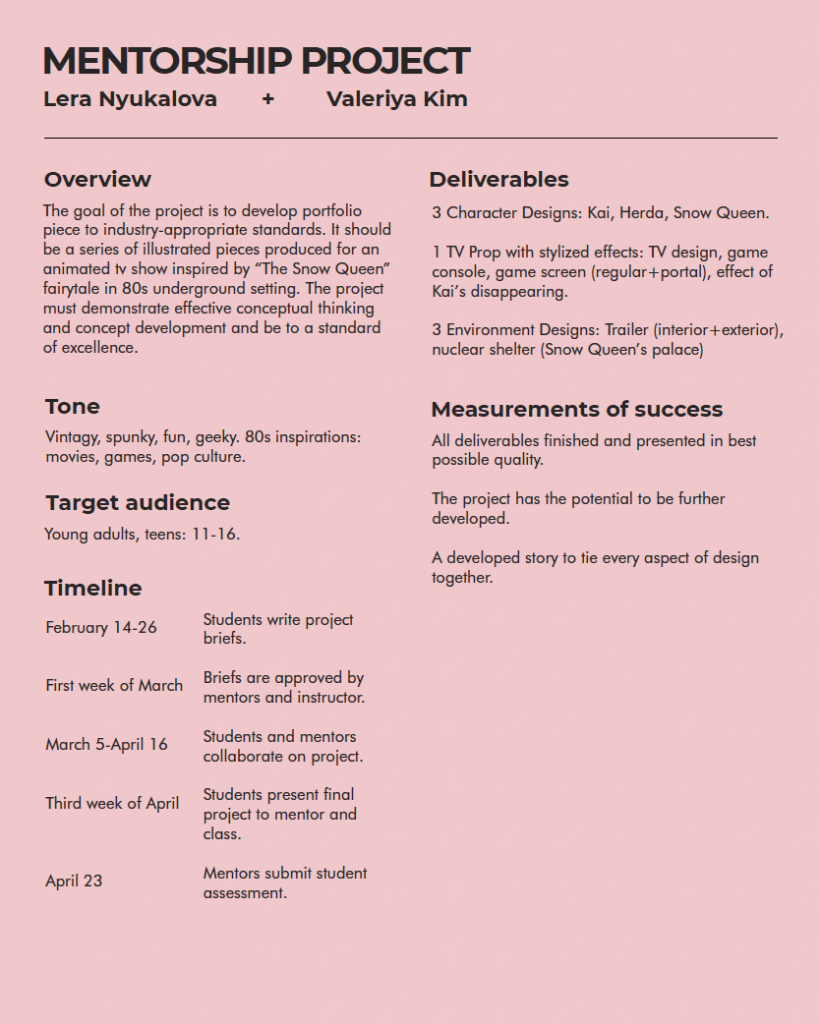
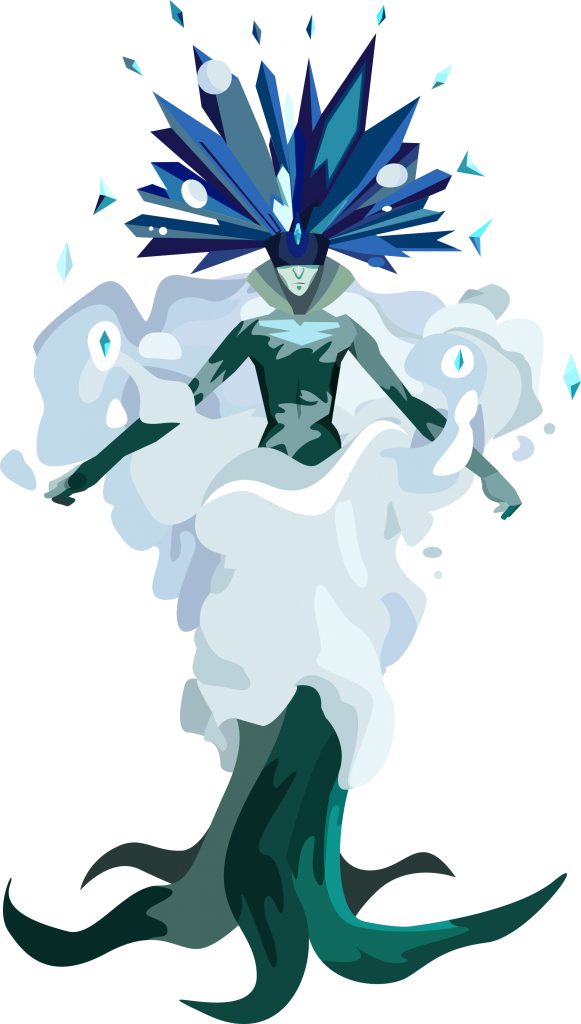


After creating a character design the most essential part of creating a fictional world is building the environment that your characters are going to interact with. It is important to mention that the surroundings of the heroes describe their personalities in-depth: what is their daily routine like, what are their interests and hobbies, how do they get by, what are some of their memories. All of these concepts begin. with a bunch of simple sketches, developing gradually into a detailed illustration. At this point, my mentor and I have considered the key elements – composition and the storytelling, leaving lighting and colour for the future progress.
As we tried to imagine what would Kai’s and Herda’s world look like, we thought of the situation where the two of them had to take care of each other without any adult supervision. It would be a story of the two rascals living alone on some abandoned parking lot in a small town in the US. The siblings use the old forgotten camping van as their shelter, surrounding it with the objects of the necessary household objects for cooking, eating, gardening, fishing and etc.
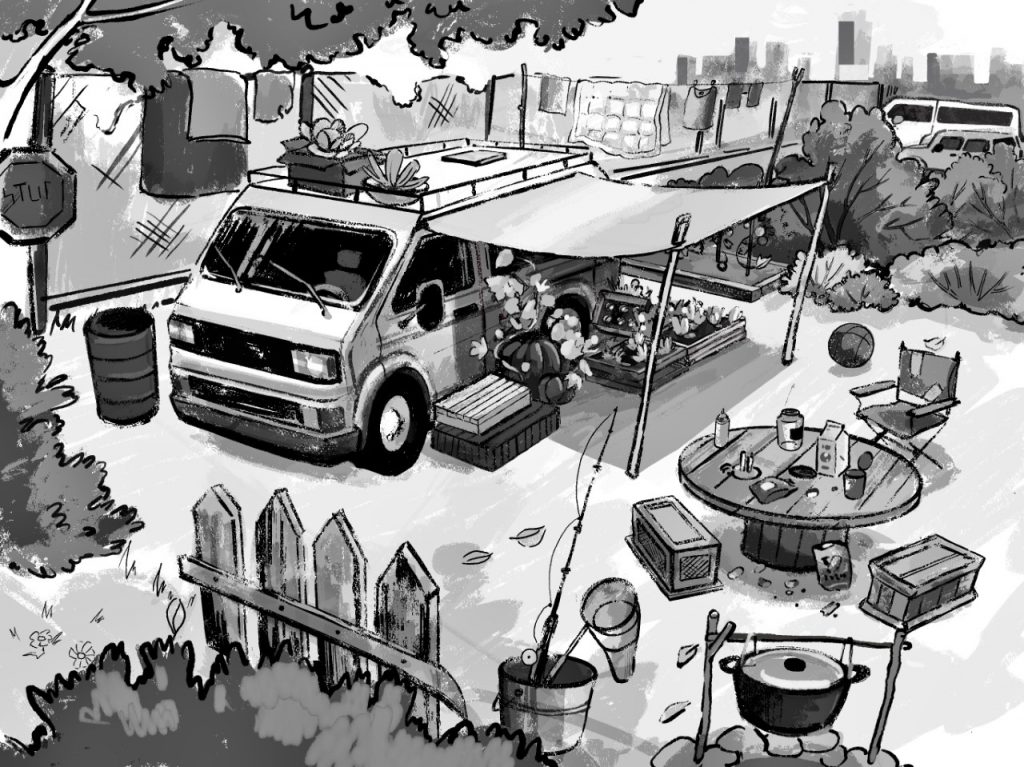
The inside of the van has 3 divisions: common area, Herda’s bed and Kai’s bed. The common area exists to connect the two characters with mutual belongings, (one of those being a box with their parents’ memorabilia. Kai’s bed expresses his interest in the comic book culture and depicts Kai as a messy kid, who is a bit less mature than his sister. Meanwhile, Herda’s bed is full of objects that describe her as organized and aspiring to travel around the world someday.
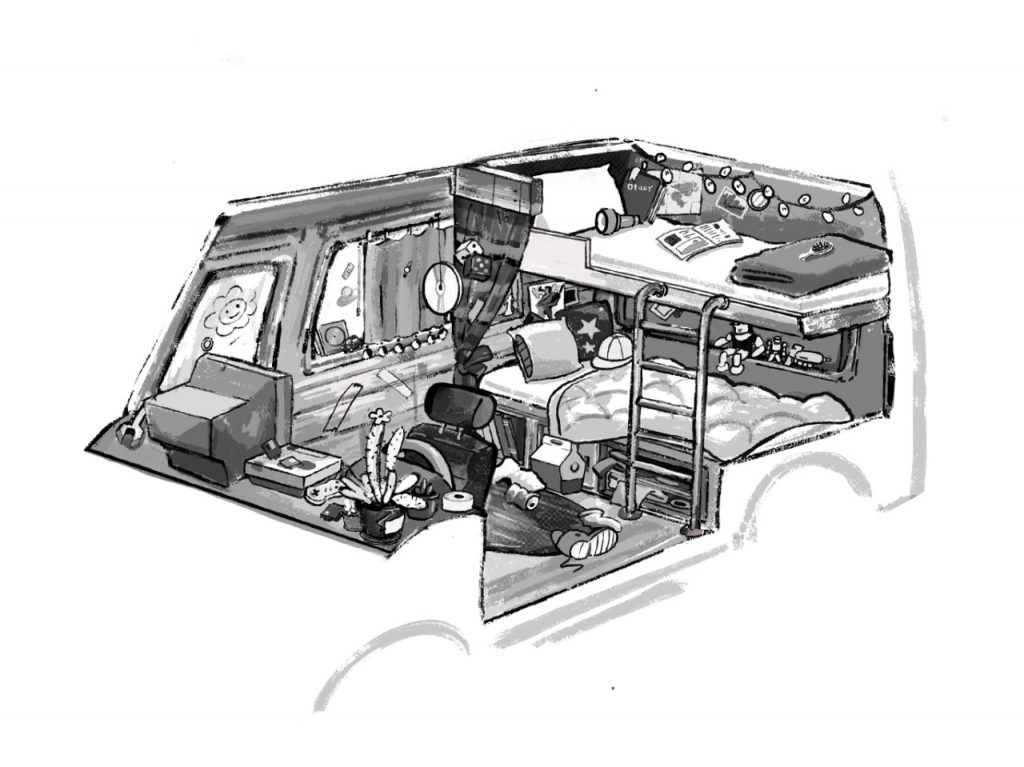

In addition to that, we’ve come up with the villain hideout. We imagined that the Snow Queen, as an alien fell off the sky and crashed into an abandoned church basement leaving an icy trail behind her.
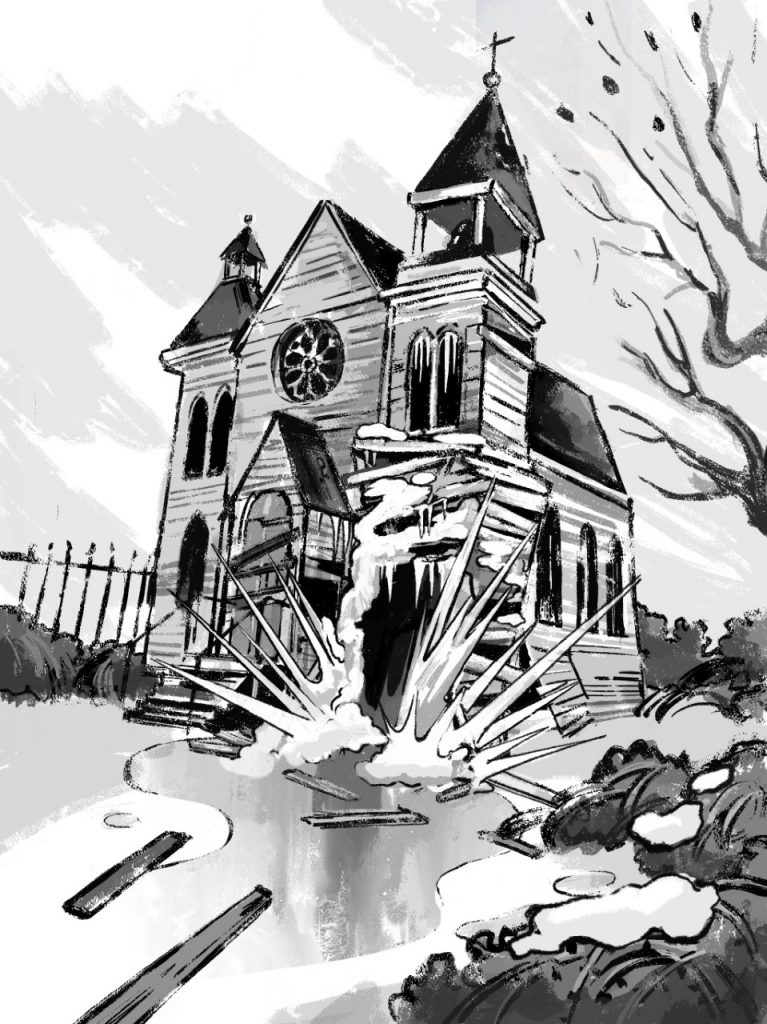
Creating a character for any type of target audience begins with developing a back story. A backstory includes all of the background information you need to know. To create one, dive into the research of different places, cultures, professions, and more. It’s best to know absolutely everything about them so that you’re able to translate the backstory into their design. Where do they live? Who are their parents? What is their hobby? Who is their best friend ? What do they usually eat? What are their interests?
In our case, I am creating the two siblings from the Snow Queen fairy tale, Kai and Herda. I am reimagining the two of them in the 80s setting, therefore it doesn’t make sense for them to live on the balcony of an old Dutch house like in the original story by Hans Christian Andersen.
In this story, Kai and Herda ran away from a foster family and settled down in an old camping van left on an abandoned parking lot. The two of them look after each other without much adult supervision, thus the clothes they wear are clumsy and not in the best shape. Still, both of them are smart and have vigour and wit to them, features that both of them acquired from living alone.
The beginning stages of the character design is using silhouettes. Silhouette thumbnails are a helpful and productive method of design when it’s necessary to produce a large number of variations of concepts within a short period of time. The purpose of finding a strong and interesting silhouette is so that it becomes easily recognizable from a distance to the person playing a video game or watching a movie.
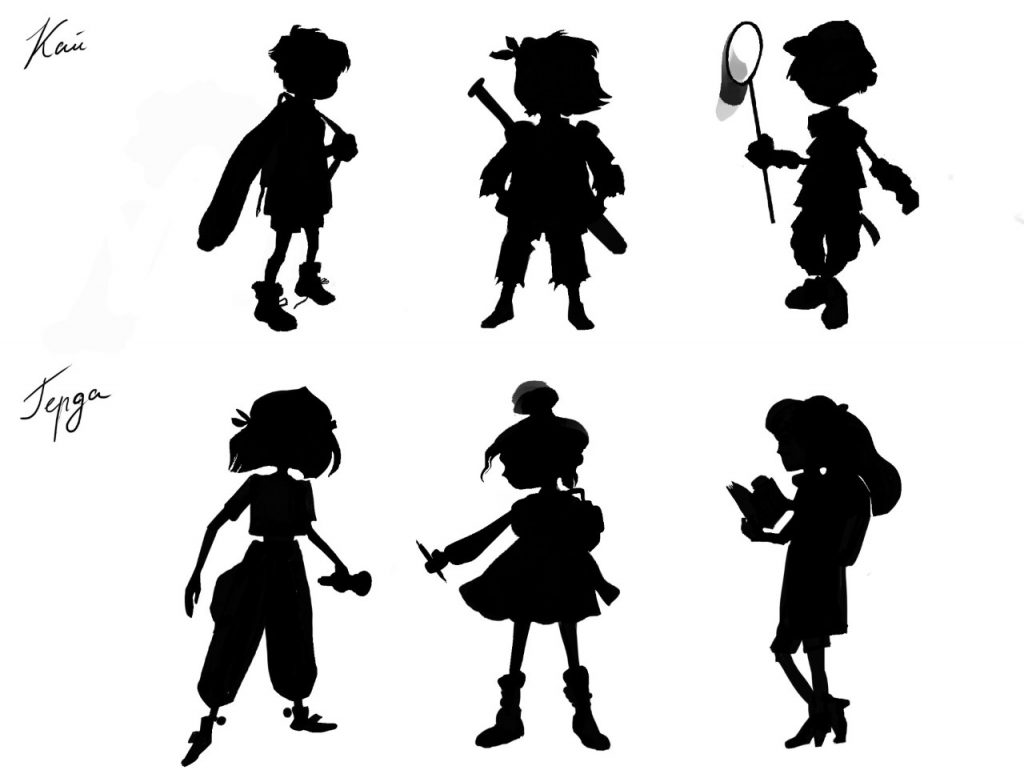
Me and Lera, my mentor, have agreed on the two strongest concepts: 1st Kai and second Herda. Later on, my task was to create tonal sketches, to give the shape, tone and personality to each character. I used a lot of reference from the 80s kids targeted ads in order to better understand the aesthetic of that time.
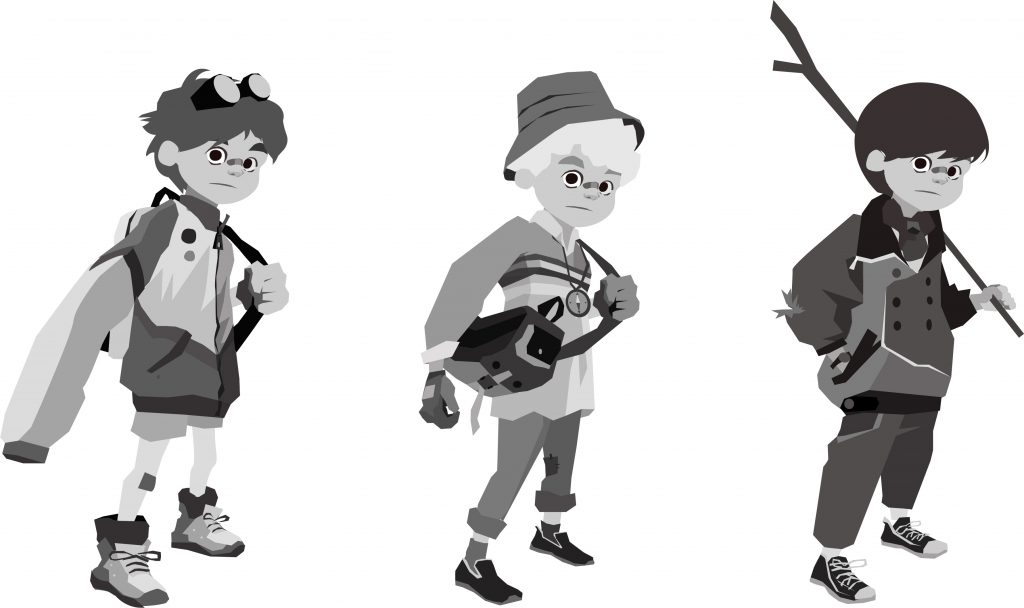
Kai. Initial concepts.
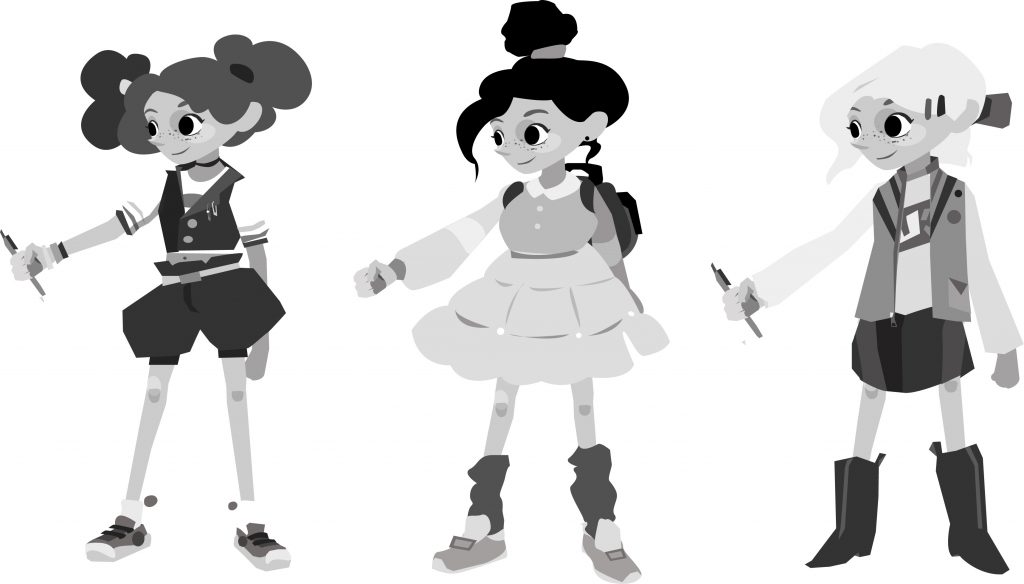
Herda. Initial concepts.

My first meeting with my mentor, Lera Nyukalova, took place in a casual setting of a cafe in Gastown. We began our discussion with a Q&A and she was very open about telling me all the details of her career path. Lera Nyukalova works as a lead designer in Atomic Cartoons. She created stunning environment designs for an upcoming Netflix show “Last Kids on Earth”. Talking to her was incredibly insightful since her journey towards her dream job began in a very similar setting to mine. Both of us come from the same city, Almaty, and both attended the IDEA program. Lera also showed me her portfolio of stunning digital paintings which got me even more inspired to learn from her.
Throughout our talk, I found out a lot of useful information about networking in the animation industry, self – discipline and the work ethic needed for reaching success. I was pleasantly surprised to find out there are quite a few industry professionals in Vancouver who came from Kazakhstan, just as I did. One of the most important tips that I noted down was that attending art and design events is one of the best ways of discovering new connections. I was also shown a few tips & tricks for improving the quality of my drawings.
When we moved onto deciding what type of project to work on, Lera gave me a suggestion to take an existing fairytale as a base, adding a certain twist to it. This is needed for a base narrative that we would later use as guidance for the characters and environment designs. Later on, we have settled on the idea of readapting the classic “Snow Queen” set in the vibrant era of the 80s. This is very exciting as the 80s inspirations, such as aliens, cold war, video arcades and pop culture can lead your imagination to incredible results. I am now all set with a written brief a tone of inspiration to begin ideating on the character design, our 1st stage of the project.
